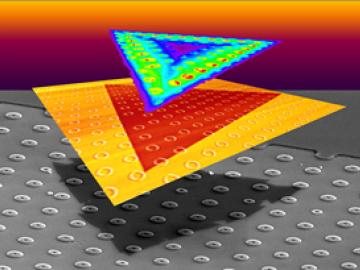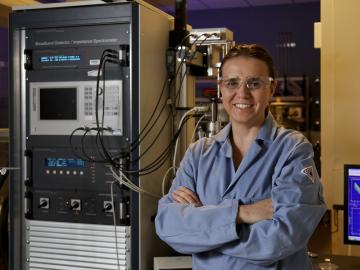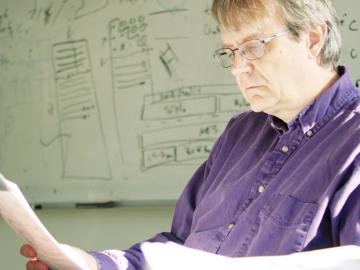
Filter News
Area of Research
- (-) Materials (91)
- (-) Neutron Science (31)
- (-) Nuclear Science and Technology (6)
- Advanced Manufacturing (1)
- Biology and Environment (29)
- Computational Engineering (2)
- Computer Science (9)
- Electricity and Smart Grid (3)
- Energy Frontier Research Centers (1)
- Energy Science (111)
- Functional Materials for Energy (1)
- Fusion and Fission (5)
- Materials for Computing (13)
- Mathematics (1)
- National Security (22)
- Quantum information Science (9)
- Sensors and Controls (1)
- Supercomputing (59)
- Transportation Systems (2)
News Topics
- (-) Grid (5)
- (-) Machine Learning (7)
- (-) Mathematics (1)
- (-) Molten Salt (7)
- (-) Nanotechnology (43)
- (-) Physics (31)
- (-) Quantum Science (15)
- (-) Transportation (19)
- 3-D Printing/Advanced Manufacturing (30)
- Advanced Reactors (14)
- Artificial Intelligence (12)
- Big Data (3)
- Bioenergy (17)
- Biology (11)
- Biomedical (21)
- Biotechnology (1)
- Buildings (5)
- Chemical Sciences (34)
- Clean Water (4)
- Composites (9)
- Computer Science (26)
- Coronavirus (14)
- Critical Materials (13)
- Cybersecurity (6)
- Energy Storage (38)
- Environment (21)
- Exascale Computing (2)
- Fossil Energy (1)
- Frontier (4)
- Fusion (16)
- High-Performance Computing (6)
- Hydropower (1)
- Irradiation (1)
- Isotopes (16)
- ITER (1)
- Materials (80)
- Materials Science (88)
- Microscopy (27)
- National Security (4)
- Neutron Science (129)
- Nuclear Energy (50)
- Partnerships (11)
- Polymers (18)
- Quantum Computing (4)
- Security (3)
- Simulation (1)
- Space Exploration (10)
- Summit (6)
Media Contacts

A new method developed at Oak Ridge National Laboratory improves the energy efficiency of a desalination process known as solar-thermal evaporation.

A team of researchers at Oak Ridge National Laboratory have demonstrated that designed synthetic polymers can serve as a high-performance binding material for next-generation lithium-ion batteries.

Scientists have discovered a way to alter heat transport in thermoelectric materials, a finding that may ultimately improve energy efficiency as the materials

A team led by scientists at the Department of Energy’s Oak Ridge National Laboratory explored how atomically thin two-dimensional (2D) crystals can grow over 3D objects and how the curvature of those objects can stretch and strain the

An ORNL-led team's observation of certain crystalline ice phases challenges accepted theories about super-cooled water and non-crystalline ice. Their findings, reported in the journal Nature, will also lead to better understanding of ice and its various phases found on other planets, moons and elsewhere in space.

OAK RIDGE, Tenn., May 7, 2019—Energy Secretary Rick Perry, Congressman Chuck Fleischmann and lab officials today broke ground on a multipurpose research facility that will provide state-of-the-art laboratory space

Vera Bocharova at the Department of Energy’s Oak Ridge National Laboratory investigates the structure and dynamics of soft materials.

More than 1800 years ago, Chinese astronomers puzzled over the sudden appearance of a bright “guest star” in the sky, unaware that they were witnessing the cosmic forge of a supernova, an event repeated countless times scattered across the universe.

OAK RIDGE, Tenn., Feb. 8, 2019—The Department of Energy’s Oak Ridge National Laboratory has named Sean Hearne director of the Center for Nanophase Materials Sciences. The center is a DOE Office of Science User Facility that brings world-leading resources and capabilities to the nanoscience resear...

Oak Ridge National Laboratory scientists analyzed more than 50 years of data showing puzzlingly inconsistent trends about corrosion of structural alloys in molten salts and found one factor mattered most—salt purity.


